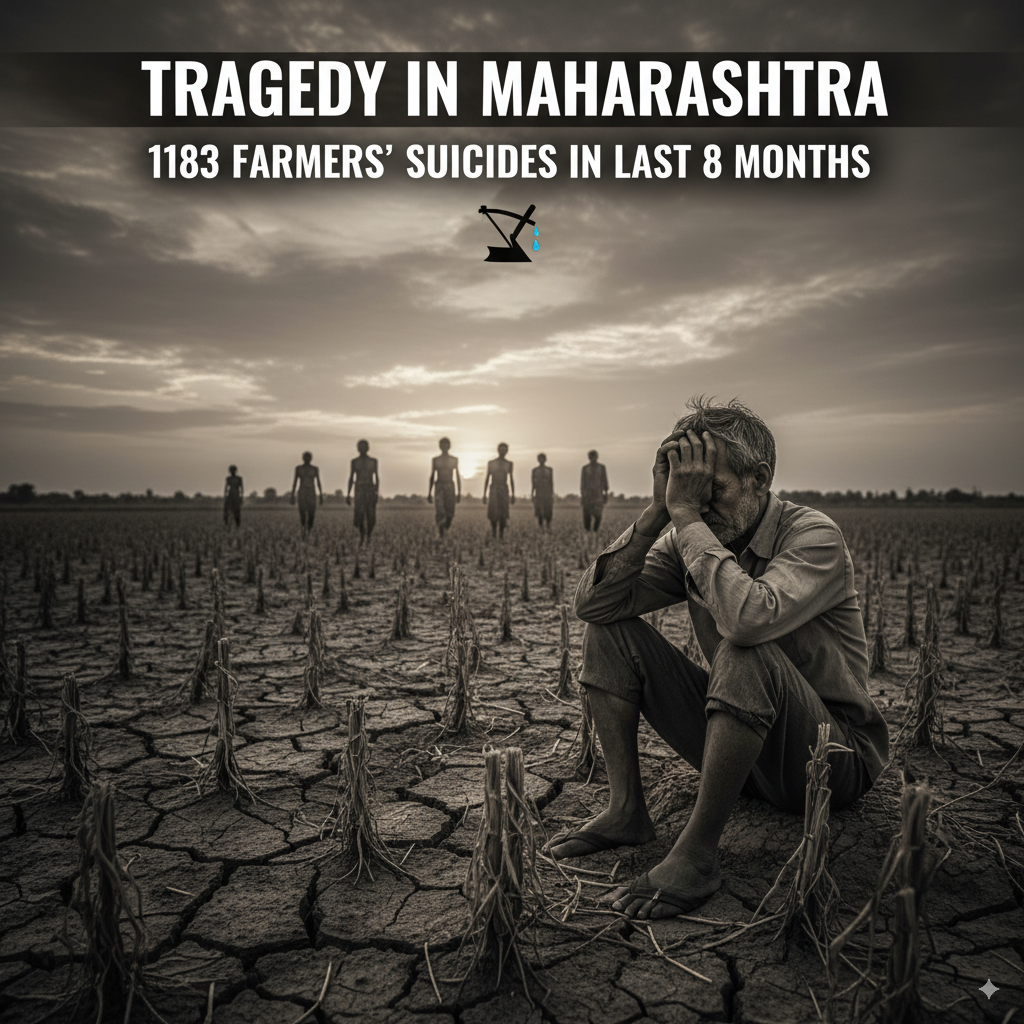The state government of Maharashtra has reported a concerning rise in farmer suicides, with 1,183 farmers taking their own lives in the past eight months of 2025. This figure comes despite the government’s claims of implementing various measures to support the farming community. These initiatives include establishing counselling centres, ensuring fair prices for agricultural produce, and improving irrigation facilities. However, the persistent rate of farmer suicides indicates that these efforts are not yet sufficient to address the deep-rooted issues faced by farmers.
The data reveals that the Amravati and Chhatrapati Sambhajinagar divisions have recorded the highest number of farmer suicides. The situation is particularly grim in the Yavatmal district, where a staggering 44 farmers have died by suicide in a single month. This highlights a severe crisis in these regions, demanding urgent attention and more effective interventions. Factors such as crop failure due to unpredictable weather patterns, mounting debt, and lack of access to timely credit are often cited as major reasons behind these tragic events. The emotional and financial distress experienced by farmers can become unbearable, leading them to take such drastic steps.
The government’s stated measures, such as counselling centres, aim to provide psychological support to farmers struggling with stress and depression. Ensuring fair prices for their produce is crucial to improve their income and reduce financial burdens. Furthermore, enhancing irrigation facilities can help mitigate the risks associated with rain-dependent agriculture and improve crop yields. Despite these well-intentioned programmes, the continuous rise in suicide numbers suggests a gap between policy implementation and on-ground impact. There might be challenges in reaching all farmers, particularly those in remote areas, or the existing support systems may not be adequate to handle the scale of the problem.
Experts suggest that a multi-pronged approach is necessary. This includes not only government schemes but also community-based support, financial literacy programmes, and more accessible agricultural extension services. Diversifying crops and promoting alternative livelihood options could also offer farmers a buffer against agricultural risks. The social and economic conditions that push farmers to such extremes need a comprehensive and empathetic understanding. The tragic loss of over a thousand lives underscores the urgent need for a renewed focus on the welfare of Maharashtra’s farmers, ensuring their livelihoods are secure and their mental well-being is protected. The state must redouble its efforts and explore innovative solutions to break this cycle of despair.

